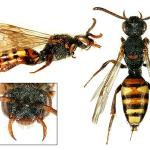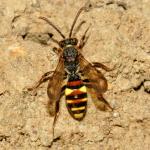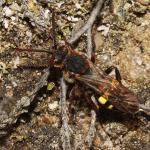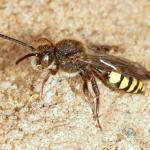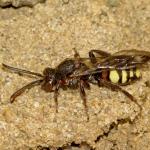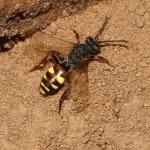Widely distributed and generally locally common throughout much of the British Isles. It is, however, inexplicably very scarce in Kent (G W Allen, pers. comm.) and Essex (P Harvey, pers. comm.). The range extends north to central Scotland (Renfrew, Midlothian and West Perthshire) and includes the Isle of Man. It is also widespread in Ireland. There are no records of the species from the Channel Islands. In Europe it is mainly found in the north (reaching northern Finland), with only scattered records from further south.
This species is not regarded as being scarce or threatened.
Found with the host bee in open woodland, on heaths and moors (ascending to 300 m on Dartmoor, Devon).
Univoltine; early March to mid-May.
A cleptoparasite of Andrena apicata (Perkins, 1919, 1943, 1945; Chambers, 1949) and A. clarkella (Perkins, 1919). Often observed in the vicinity of the nest burrows of these two species of mining bees, especially A. clarkella.
Barren strawberry, bilberry, dandelion and sallow.
None reported.
2001


